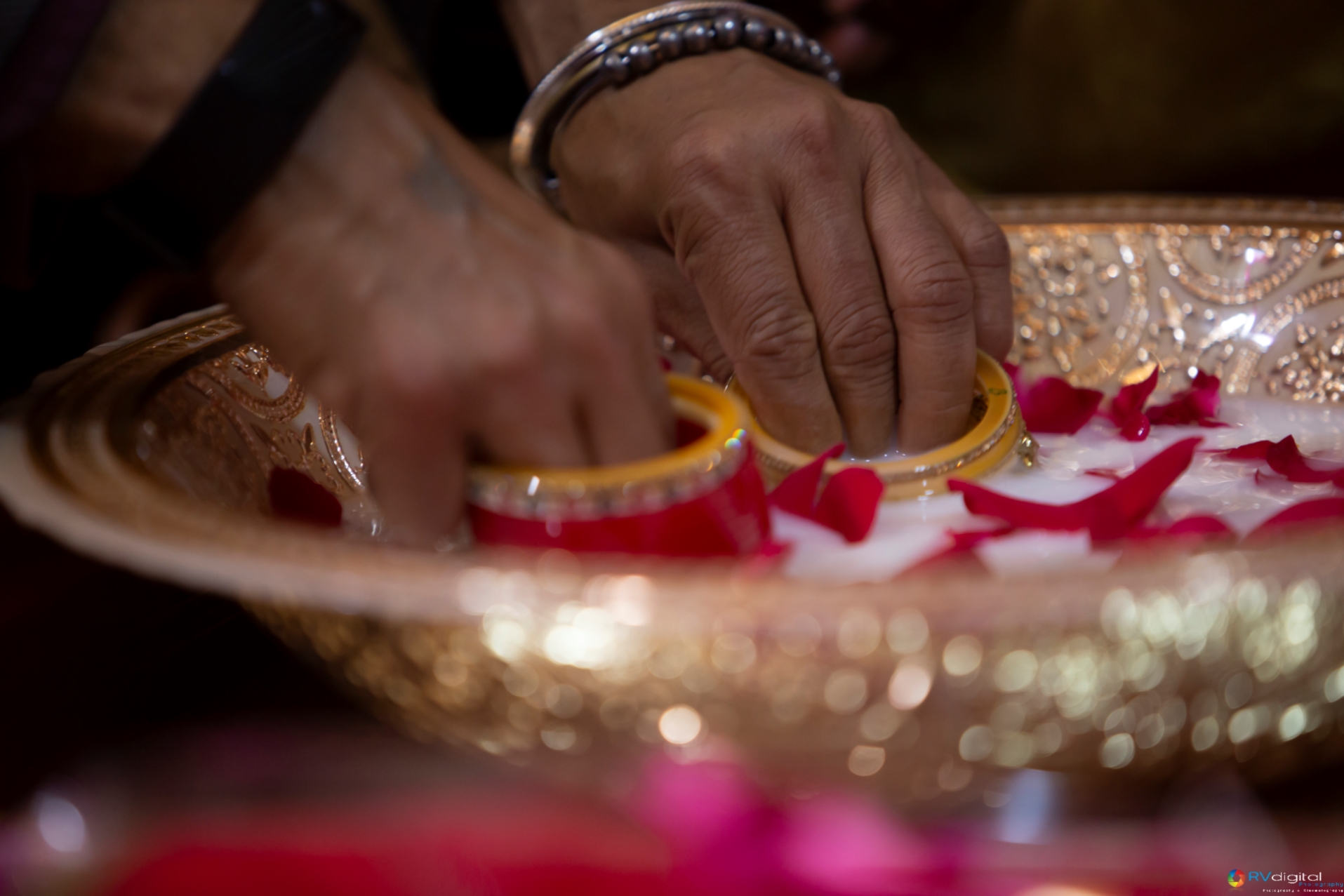Traditionally
The Choora has originated from the region of Punjab in India, signifying the new beginning of married life and marks of a new bride. Where the choora and colour red is significant in belief to strengthen the bond, fertility, prosperity, and luck to the newlyweds.
Traditionally the choora was to be worn for 1 year post-marriage (until the first anniversary or until they get pregnant/which ever came first) Choora symbolised and still does today that the girl is newly married and she would refrain from household work, relatives and friends will give gifts as blessings during their first occasions helping the bride to get used to the new people in the new house.

The bridal choora was traditionally made up of red glass bangles and a few bangles made from ivory. The bride would wear an auspicious number of either 21 or 51.
The bride could provide information on what kind of choora bangles she would like to wear, the bride’s Mama, Mami (maternal Uncle-Mum’s brother(s)/Aunt) would be the ones to gift the Choora as part of the Nanki Shakk (Gifts from mum’s side Family) to the bride during the Choora ceremony.
The choora would be put onto the bride by her Mamma Ji(s) during a choora ceremony, where the choora would be purified with milk and rose water (or rose petals). The bride was not allowed to look at her wedding choora until the wedding day. The brides head would be covered with a red dupatta and her eyes closed/covered, while the choora is put on, the choora would then be covered with cloth until the wedding ceremony.
When the color started to fade, her in-laws would have it re-coloured, so everyone would know that she had been married for less than a year.
In some traditions there will be another ceremony Choora vadhana in which the choora was removed and glass chooriyan (bangles) were placed on both hands, This usually was accompanied with sugary sweet and a monetary shagun. The choora then was taken to a river and a prayer was said and it was left to float onto the water. these customs vary from family to family.
In some traditions bridal choora is something that one can’t take off herself, the bride’s sister-in-law is the only one who can remove it from the bride’s wrist. If the bride wants to wear it for a longer time, the sister-in-law only removes two bangles from each hand and then places it back.
Punjabi custom has it that the bride may refrain from heavy housework in her marital home to keep it intact for the 40 days, as a kind of honeymoon.
Today not only brides from the region of Punjab wear the traditional choora but Brides from all over India wear a choora or another form of bangles.
Nowadays, the number of bangles vary depending on different communities and the bride’s personal preference and dependent on design.
As the Choora has also become fashionable Brides today are opting to go in person to purchase the choora itself and pass the cost on to their Mamma ji. While the Choora ceremony predominantly stays the same today, this eliminates the bride not seeing her choora until the wedding day.
The choora today is no longer made of glass or ivory, they are now made of plastic and brass making the Choora more durable and longer lasting than traditionally.
Today’s designs are more glamorous with embellished polki bangles and antique styles added to the choora. Often you will even see that Brides today are choosing from a variety of colours to bring together their bridal look.
The choora today can be seen to be worn for 40 days minimum and be taken on and off as they wish to up to a year. The choora however should still be worn on the same hand it was taken off and kept within the same order it was put on.
The Choora can be kept as keepsake by the bride and preserved to revisit her fond memories whenever she wants to.





